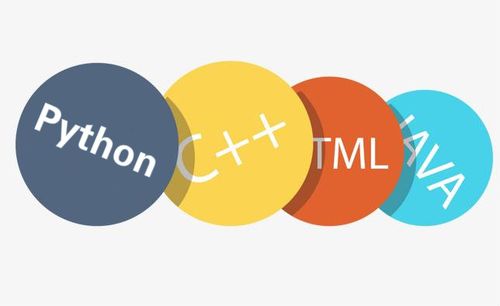
搭建子模块:spring6-aop
声明计算器接口Calculator,包含加减乘除的抽象方法
public interface Calculator {int add(int i, int j);int sub(int i, int j);int mul(int i, int j);int div(int i, int j);}
public class CalculatorImpl implements Calculator {@Overridepublic int add(int i, int j) {int result = i + j;System.out.println("方法内部 result = " + result);return result;}@Overridepublic int sub(int i, int j) {int result = i - j;System.out.println("方法内部 result = " + result);return result;}@Overridepublic int mul(int i, int j) {int result = i * j;System.out.println("方法内部 result = " + result);return result;}@Overridepublic int div(int i, int j) {int result = i / j;System.out.println("方法内部 result = " + result);return result;}
}
public class CalculatorLogImpl implements Calculator {@Overridepublic int add(int i, int j) {System.out.println("[日志] add 方法开始了,参数是:" + i + "," + j);int result = i + j;System.out.println("方法内部 result = " + result);System.out.println("[日志] add 方法结束了,结果是:" + result);return result;}@Overridepublic int sub(int i, int j) {System.out.println("[日志] sub 方法开始了,参数是:" + i + "," + j);int result = i - j;System.out.println("方法内部 result = " + result);System.out.println("[日志] sub 方法结束了,结果是:" + result);return result;}@Overridepublic int mul(int i, int j) {System.out.println("[日志] mul 方法开始了,参数是:" + i + "," + j);int result = i * j;System.out.println("方法内部 result = " + result);System.out.println("[日志] mul 方法结束了,结果是:" + result);return result;}@Overridepublic int div(int i, int j) {System.out.println("[日志] div 方法开始了,参数是:" + i + "," + j);int result = i / j;System.out.println("方法内部 result = " + result);System.out.println("[日志] div 方法结束了,结果是:" + result);return result;}
}
①现有代码缺陷
针对带日志功能的实现类,我们发现有如下缺陷:
②解决思路
解决这两个问题,核心就是:解耦。我们需要把附加功能从业务功能代码中抽取出来。
③困难
解决问题的困难:要抽取的代码在方法内部,靠以前把子类中的重复代码抽取到父类的方式没法解决。所以需要引入新的技术。
①介绍
二十三种设计模式中的一种,属于结构型模式。它的作用就是通过提供一个代理类,让我们在调用目标方法的时候,不再是直接对目标方法进行调用,而是通过代理类间接调用。让不属于目标方法核心逻辑的代码从目标方法中剥离出来——解耦。调用目标方法时先调用代理对象的方法,减少对目标方法的调用和打扰,同时让附加功能能够集中在一起也有利于统一维护。
使用代理后:
②生活中的代理
③相关术语
创建静态代理类:
public class CalculatorStaticProxy implements Calculator {// 将被代理的目标对象声明为成员变量private Calculator target;public CalculatorStaticProxy(Calculator target) {this.target = target;}@Overridepublic int add(int i, int j) {// 附加功能由代理类中的代理方法来实现System.out.println("[日志] add 方法开始了,参数是:" + i + "," + j);// 通过目标对象来实现核心业务逻辑int addResult = target.add(i, j);System.out.println("[日志] add 方法结束了,结果是:" + addResult);return addResult;}
}
静态代理确实实现了解耦,但是由于代码都写死了,完全不具备任何的灵活性。就拿日志功能来说,将来其他地方也需要附加日志,那还得再声明更多个静态代理类,那就产生了大量重复的代码,日志功能还是分散的,没有统一管理。
提出进一步的需求:将日志功能集中到一个代理类中,将来有任何日志需求,都通过这一个代理类来实现。这就需要使用动态代理技术了。
生产代理对象的工厂类:
public class ProxyFactory {private Object target;public ProxyFactory(Object target) {this.target = target;}public Object getProxy(){/*** newProxyInstance():创建一个代理实例* 其中有三个参数:* 1、classLoader:加载动态生成的代理类的类加载器* 2、interfaces:目标对象实现的所有接口的class对象所组成的数组* 3、invocationHandler:设置代理对象实现目标对象方法的过程,即代理类中如何重写接口中的抽象方法*/ClassLoader classLoader = Class().getClassLoader();Class<?>[] interfaces = Class().getInterfaces();InvocationHandler invocationHandler = new InvocationHandler() {@Overridepublic Object invoke(Object proxy, Method method, Object[] args) throws Throwable {/*** proxy:代理对象* method:代理对象需要实现的方法,即其中需要重写的方法* args:method所对应方法的参数*/Object result = null;try {System.out.println("[动态代理][日志] "&#Name()+",参数:"+ String(args));result = method.invoke(target, args);System.out.println("[动态代理][日志] "&#Name()+",结果:"+ result);} catch (Exception e) {e.printStackTrace();System.out.println("[动态代理][日志] "&#Name()+",异常:"&#Message());} finally {System.out.println("[动态代理][日志] "&#Name()+",方法执行完毕");}return result;}};wProxyInstance(classLoader, interfaces, invocationHandler);}
}
@Test
public void testDynamicProxy(){ProxyFactory factory = new ProxyFactory(new CalculatorLogImpl());Calculator proxy = (Calculator) Proxy();proxy.div(1,0);//proxy.div(1,1);
}
AOP(Aspect Oriented Programming)是一种设计思想,是软件设计领域中的面向切面编程,它是面向对象编程的一种补充和完善,它以通过预编译方式和运行期动态代理方式实现,在不修改源代码的情况下,给程序动态统一添加额外功能的一种技术。利用AOP可以对业务逻辑的各个部分进行隔离,从而使得业务逻辑各部分之间的耦合度降低,提高程序的可重用性,同时提高了开发的效率。
分散在每个各个模块中解决同一样的问题,如用户验证、日志管理、事务处理、数据缓存都属于横切关注点。
从每个方法中抽取出来的同一类非核心业务。在同一个项目中,我们可以使用多个横切关注点对相关方法进行多个不同方面的增强。这个概念不是语法层面的,而是根据附加功能的逻辑上的需要:有十个附加功能,就有十个横切关注点。
增强,通俗说,就是你想要增强的功能,比如 安全,事务,日志等。
每一个横切关注点上要做的事情都需要写一个方法来实现,这样的方法就叫通知方法。
封装通知方法的类。
被代理的目标对象。
向目标对象应用通知之后创建的代理对象。
这也是一个纯逻辑概念,不是语法定义的。
把方法排成一排,每一个横切位置看成x轴方向,把方法从上到下执行的顺序看成y轴,x轴和y轴的交叉点就是连接点。通俗说,就是spring允许你使用通知的地方
定位连接点的方式。
每个类的方法中都包含多个连接点,所以连接点是类中客观存在的事物(从逻辑上来说)。
如果把连接点看作数据库中的记录,那么切入点就是查询记录的 SQL 语句。
Spring 的 AOP 技术可以通过切入点定位到特定的连接点。通俗说,要实际去增强的方法
切点通过 org.springframework.aop.Pointcut 接口进行描述,它使用类和方法作为连接点的查询条件。
简化代码:把方法中固定位置的重复的代码抽取出来,让被抽取的方法更专注于自己的核心功能,提高内聚性。
代码增强:把特定的功能封装到切面类中,看哪里有需要,就往上套,被套用了切面逻辑的方法就被切面给增强了。
①添加依赖
在IOC所需依赖基础上再加入下面依赖即可:
<dependencies><!--spring context依赖--><!--当你引入Spring Context依赖之后,表示将Spring的基础依赖引入了--><dependency><groupId>org.springframework</groupId><artifactId>spring-context</artifactId><version>6.0.2</version></dependency><!--spring aop依赖--><dependency><groupId>org.springframework</groupId><artifactId>spring-aop</artifactId><version>6.0.2</version></dependency><!--spring aspects依赖--><dependency><groupId>org.springframework</groupId><artifactId>spring-aspects</artifactId><version>6.0.2</version></dependency><!--junit5测试--><dependency><groupId>org.junit.jupiter</groupId><artifactId>junit-jupiter-api</artifactId><version>5.3.1</version></dependency><!--log4j2的依赖--><dependency><groupId>org.apache.logging.log4j</groupId><artifactId>log4j-core</artifactId><version>2.19.0</version></dependency><dependency><groupId>org.apache.logging.log4j</groupId><artifactId>log4j-slf4j2-impl</artifactId><version>2.19.0</version></dependency>
</dependencies>
②准备被代理的目标资源
接口:
public interface Calculator {int add(int i, int j);int sub(int i, int j);int mul(int i, int j);int div(int i, int j);}
实现类:
@Component
public class CalculatorImpl implements Calculator {@Overridepublic int add(int i, int j) {int result = i + j;System.out.println("方法内部 result = " + result);return result;}@Overridepublic int sub(int i, int j) {int result = i - j;System.out.println("方法内部 result = " + result);return result;}@Overridepublic int mul(int i, int j) {int result = i * j;System.out.println("方法内部 result = " + result);return result;}@Overridepublic int div(int i, int j) {int result = i / j;System.out.println("方法内部 result = " + result);return result;}
}
// @Aspect表示这个类是一个切面类
@Aspect
// @Component注解保证这个切面类能够放入IOC容器
@Component
public class LogAspect {@Before("execution(public int com.atguigu.aop.annotation.CalculatorImpl.*(..))")public void beforeMethod(JoinPoint joinPoint){String methodName = Signature().getName();String args = Args());System.out.println("Logger-->前置通知,方法名:"+methodName+",参数:"+args);}@After("execution(* com.atguigu.aop.annotation.CalculatorImpl.*(..))")public void afterMethod(JoinPoint joinPoint){String methodName = Signature().getName();System.out.println("Logger-->后置通知,方法名:"+methodName);}@AfterReturning(value = "execution(* com.atguigu.aop.annotation.CalculatorImpl.*(..))", returning = "result")public void afterReturningMethod(JoinPoint joinPoint, Object result){String methodName = Signature().getName();System.out.println("Logger-->返回通知,方法名:"+methodName+",结果:"+result);}@AfterThrowing(value = "execution(* com.atguigu.aop.annotation.CalculatorImpl.*(..))", throwing = "ex")public void afterThrowingMethod(JoinPoint joinPoint, Throwable ex){String methodName = Signature().getName();System.out.println("Logger-->异常通知,方法名:"+methodName+",异常:"+ex);}@Around("execution(* com.atguigu.aop.annotation.CalculatorImpl.*(..))")public Object aroundMethod(ProceedingJoinPoint joinPoint){String methodName = Signature().getName();String args = Args());Object result = null;try {System.out.println("环绕通知-->目标对象方法执行之前");//目标对象(连接点)方法的执行result = joinPoint.proceed();System.out.println("环绕通知-->目标对象方法返回值之后");} catch (Throwable throwable) {throwable.printStackTrace();System.out.println("环绕通知-->目标对象方法出现异常时");} finally {System.out.println("环绕通知-->目标对象方法执行完毕");}return result;}}
在Spring的配置文件中配置:
<?xml version="1.0" encoding="UTF-8"?>
<beans xmlns=""xmlns:xsi=""xmlns:context=""xmlns:aop=""xsi:schemaLocation="://www.springframework/schema/beans/spring-beans.xsd://www.springframework/schema/context/spring-context.xsd://www.springframework/schema/aop/spring-aop.xsd"><!--基于注解的AOP的实现:1、将目标对象和切面交给IOC容器管理(注解+扫描)2、开启AspectJ的自动代理,为目标对象自动生成代理3、将切面类通过注解@Aspect标识--><context:component-scan base-package="com.atguigu.aop.annotation"></context:component-scan><aop:aspectj-autoproxy />
</beans>
执行测试:
public class CalculatorTest {private Logger logger = Logger(CalculatorTest.class);@Testpublic void testAdd(){ApplicationContext ac = new ClassPathXmlApplicationContext(&#l");Calculator calculator = ac.getBean( Calculator.class);int add = calculator.add(1, 1);logger.info("执行成功:"+add);}}
执行结果:
各种通知的执行顺序:
- Spring版本5.3.x以前:
- 前置通知
- 目标操作
- 后置通知
- 返回通知或异常通知
- Spring版本5.3.x以后:
- 前置通知
- 目标操作
- 返回通知或异常通知
- 后置通知
①作用
②语法细节
用*号代替“权限修饰符”和“返回值”部分表示“权限修饰符”和“返回值”不限
在包名的部分,一个“*”号只能代表包的层次结构中的一层,表示这一层是任意的。
在包名的部分,使用“*…”表示包名任意、包的层次深度任意
在类名的部分,类名部分整体用*号代替,表示类名任意
在类名的部分,可以使用*号代替类名的一部分
在方法名部分,可以使用*号表示方法名任意
在方法名部分,可以使用*号代替方法名的一部分
在方法参数列表部分,使用(…)表示参数列表任意
在方法参数列表部分,使用(int,…)表示参数列表以一个int类型的参数开头
在方法参数列表部分,基本数据类型和对应的包装类型是不一样的
在方法返回值部分,如果想要明确指定一个返回值类型,那么必须同时写明权限修饰符
①声明
@Pointcut("execution(* com.atguigu.aop.annotation.*.*(..))")
public void pointCut(){}
②在同一个切面中使用
@Before("pointCut()")
public void beforeMethod(JoinPoint joinPoint){String methodName = Signature().getName();String args = Args());System.out.println("Logger-->前置通知,方法名:"+methodName+",参数:"+args);
}
③在不同切面中使用
@Before("com.atguigu.aop.CommonPointCut.pointCut()")
public void beforeMethod(JoinPoint joinPoint){String methodName = Signature().getName();String args = Args());System.out.println("Logger-->前置通知,方法名:"+methodName+",参数:"+args);
}
①获取连接点信息
获取连接点信息可以在通知方法的参数位置设置JoinPoint类型的形参
@Before("execution(public int com.atguigu.aop.annotation.CalculatorImpl.*(..))")
public void beforeMethod(JoinPoint joinPoint){//获取连接点的签名信息String methodName = Signature().getName();//获取目标方法到的实参信息String args = Args());System.out.println("Logger-->前置通知,方法名:"+methodName+",参数:"+args);
}
②获取目标方法的返回值
@AfterReturning中的属性returning,用来将通知方法的某个形参,接收目标方法的返回值
@AfterReturning(value = "execution(* com.atguigu.aop.annotation.CalculatorImpl.*(..))", returning = "result")
public void afterReturningMethod(JoinPoint joinPoint, Object result){String methodName = Signature().getName();System.out.println("Logger-->返回通知,方法名:"+methodName+",结果:"+result);
}
③获取目标方法的异常
@AfterThrowing中的属性throwing,用来将通知方法的某个形参,接收目标方法的异常
@AfterThrowing(value = "execution(* com.atguigu.aop.annotation.CalculatorImpl.*(..))", throwing = "ex")
public void afterThrowingMethod(JoinPoint joinPoint, Throwable ex){String methodName = Signature().getName();System.out.println("Logger-->异常通知,方法名:"+methodName+",异常:"+ex);
}
@Around("execution(* com.atguigu.aop.annotation.CalculatorImpl.*(..))")
public Object aroundMethod(ProceedingJoinPoint joinPoint){String methodName = Signature().getName();String args = Args());Object result = null;try {System.out.println("环绕通知-->目标对象方法执行之前");//目标方法的执行,目标方法的返回值一定要返回给外界调用者result = joinPoint.proceed();System.out.println("环绕通知-->目标对象方法返回值之后");} catch (Throwable throwable) {throwable.printStackTrace();System.out.println("环绕通知-->目标对象方法出现异常时");} finally {System.out.println("环绕通知-->目标对象方法执行完毕");}return result;
}
相同目标方法上同时存在多个切面时,切面的优先级控制切面的内外嵌套顺序。
使用@Order注解可以控制切面的优先级:
参考基于注解的AOP环境
<context:component-scan base-package="com.l"></context:component-scan><aop:config><!--配置切面类--><aop:aspect ref="loggerAspect"><aop:pointcut id="pointCut" expression="execution(* com.l.CalculatorImpl.*(..))"/><aop:before method="beforeMethod" pointcut-ref="pointCut"></aop:before><aop:after method="afterMethod" pointcut-ref="pointCut"></aop:after><aop:after-returning method="afterReturningMethod" returning="result" pointcut-ref="pointCut"></aop:after-returning><aop:after-throwing method="afterThrowingMethod" throwing="ex" pointcut-ref="pointCut"></aop:after-throwing><aop:around method="aroundMethod" pointcut-ref="pointCut"></aop:around></aop:aspect>
</aop:config>
本文发布于:2024-01-27 20:55:02,感谢您对本站的认可!
本文链接:https://www.4u4v.net/it/17063601132583.html
版权声明:本站内容均来自互联网,仅供演示用,请勿用于商业和其他非法用途。如果侵犯了您的权益请与我们联系,我们将在24小时内删除。
| 留言与评论(共有 0 条评论) |